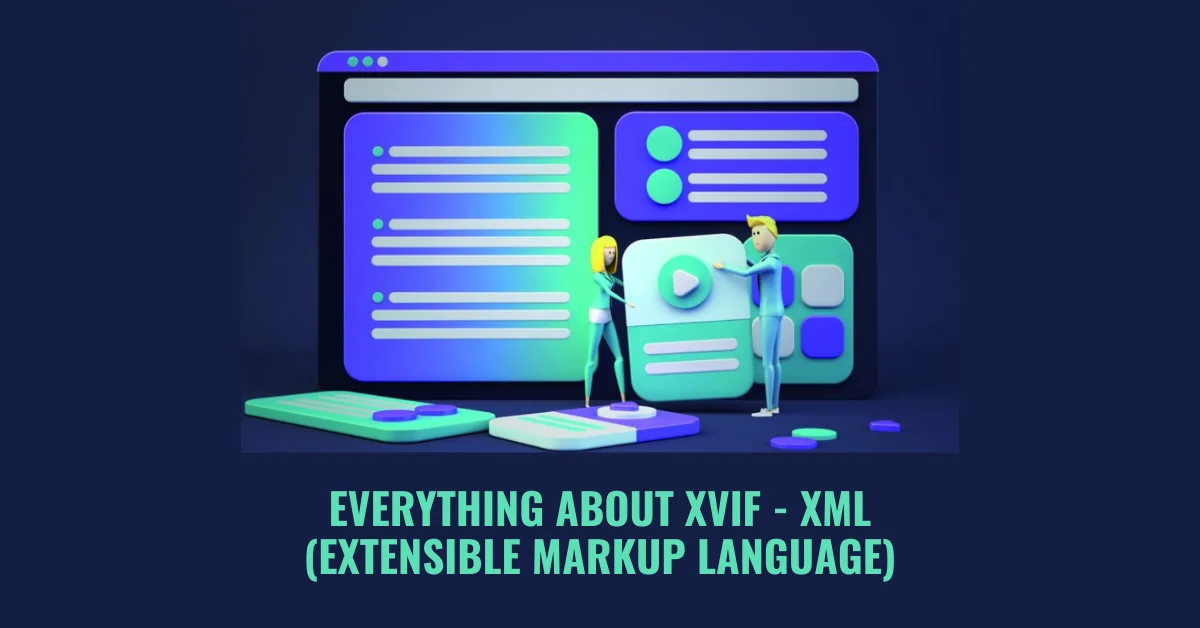TECHNOLOGY
A Step-by-Step Guide to Choosing the Right Commercial Solar Roofing System

Choosing the right commercial solar roofing system is a critical decision for property owners. The benefits of solar energy are numerous. This includes cost savings, energy independence, and reduced carbon footprint.
However, there are various options available. Selecting the best solar system for your property can seem daunting.
This guide provides an overview to help you make an informed decision. So read on to make sure you make the right decision.
Understanding Your Energy Needs
The first step in selecting the right solar roofing system is understanding your energy needs.
Conduct a thorough analysis of your property’s current energy consumption. Review your past utility bills to determine your average monthly energy usage. This information will help you establish the size of the solar system you need.
You should also consider any future energy requirements. This might affect your energy consumption.
Assessing Your Roof’s Suitability
Not all roofs are suitable for solar installations. The condition, age, and orientation of your roof play a crucial role in the efficiency of a solar system.
Begin with a professional roof inspection to assess its structural integrity. A roof in poor condition may require repairs or replacement before installing solar panels.
Next, consider the orientation and angle of your roof. South-facing roofs typically receive the most sunlight, making them ideal for solar installations.
However, east- and west-facing roofs can also be viable options. It depends on your location and specific energy needs.
Additionally, evaluate any potential shading issues from nearby buildings or trees. They could impact the efficiency of your solar installation.
Exploring Solar System Options
There are several types of solar systems to choose from. Each option has its unique advantages and applications. The three main categories include:
Photovoltaic (PV) Systems
These systems convert sunlight directly into electricity using solar panels. PV systems are the most common type of solar system due to their versatility and efficiency. They can be mounted on rooftops, ground-mounted, or integrated into building facades.
Solar Thermal Systems
Solar thermal systems use the sun’s energy to heat water or air for residential or commercial use. These systems are most suitable in areas with high hot water demand. This includes hotels, hospitals, and laundromats.
Hybrid Solar Systems
A hybrid solar system combines both PV and solar thermal technologies. This helps them generate electricity and heat water simultaneously. They offer the best of both worlds and are ideal for larger commercial properties.
Evaluating Costs and Incentives
Investing in renewable energy requires careful consideration of the costs. The initial cost of a solar power includes the price of solar panels, inverters, mounting hardware, and labor.
To offset these costs, explore available incentives and financing options. Many governments and utilities offer rebates and tax credits. They also offer grants to encourage solar adoption.
For example, the federal Investment Tax Credit (ITC) gives a big tax credit for solar installations in the United States. Some states and municipalities also offer additional incentives. This includes property tax exemptions or performance-based incentives (PBIs).
You can also consider financing options. You can look into solar leases, power purchase agreements (PPAs), and loans.
These options can help spread the cost of the installation over time. They make solar sustainable solutions more accessible.
Partnering With a Solar Installer
Choosing a reputable solar installer is crucial to the success of your solar project. Start by researching local installers. Ensure that they have the expertise.
Look for companies with positive customer reviews. They should have industry certifications. Not to mention that they should have a proven track record of successful projects.
Request quotes from multiple installers. Then, compare their proposals carefully. Ensure each proposal includes a detailed breakdown of costs and projected energy savings. They should also have system specifications.
Ask about warranties for the solar panels, inverters, and installation work. A reliable installer like this solar company in San Diego should offer warranties. They should be able to help you protect your investment.
You should also inquire about maintenance and monitoring services. Regular maintenance can keep your solar system operating at peak efficiency. So if you can, ensure that the installer you partner with offers these services.
Consider Energy Storage Solutions
Energy storage systems allow solar users to store excess energy generated during the day. They can then use it at night or during periods of low sunlight. This makes commercial solar installations even more efficient and cost-effective.
Options for energy storage include batteries, pumped hydroelectricity, and compressed air. The type of energy storage system you choose will depend on your specific needs and budget.
Work with your solar installer to determine the best option for you. They will consider your energy usage, system size, and available space.
Calculate the Return on Investment (ROI)
When considering any investment, it’s crucial to calculate the return on investment (ROI). This includes solar installations.
To determine your ROI, you’ll need to consider the initial cost of installation. You also need to consider your projected energy savings and available incentives. You should also factor in maintenance costs and the lifespan of your solar system.
A reputable solar installer can help you project your potential ROI. They can base this on your specific energy needs and local incentives.
Embrace Sustainability and Energy Independence
Choosing the right commercial solar roofing system is not just about cost savings. It’s also a statement of environmental responsibility.
Solar energy is renewable, clean, and sustainable. By investing in a solar system, you are reducing your carbon footprint. You are freeing yourself from the reliance on fossil fuels. This helps create a more sustainable future for us all.
In addition to being environmentally friendly, solar energy also offers energy independence. By generating your electricity, you are no longer at the mercy of utility companies and rising energy costs. You are taking control of your energy usage and costs.
Commercial Solar Roofing Is the Way to Go
As you can see, there are many considerations when it comes to choosing a commercial solar roofing system. It’s no longer just a trend. It’s a smart and responsible choice for property owners.
So take the time to assess your energy needs, evaluate your roof’s suitability and explore solar system options. Don’t forget to factor in costs, incentives, and ROI calculations. And most importantly, partner with a reputable solar installer.
Did you find this article helpful? If so, check out the rest of our site for more.
TECHNOLOGY
Peúgo Decoded: Your Ultimate Guide

Introduction to Peúgo
In today’s rapidly evolving technological landscape, new innovations continue to emerge, revolutionizing the way we work and interact with digital platforms. Among these innovations is Peúgo, a cutting-edge solution that has been gaining significant traction in various industries. But what exactly is Peúgo, and why is it generating so much buzz? Let’s delve into the intricacies of this groundbreaking technology.
Origins and History
– Early Development
Peúgo traces its origins back to the early 21st century when a team of visionary developers set out to create a versatile and efficient solution to streamline digital processes.
– Evolution over Time
Since its inception, Peúgo has undergone significant evolution, incorporating advanced algorithms and functionalities to meet the ever-changing demands of modern businesses and consumers.
Understanding Peúgo: Definition and Concept
At its core, Peúgo can be defined as a comprehensive software platform designed to enhance productivity, efficiency, and collaboration within organizations. Its intuitive interface and robust features make it an indispensable tool for optimizing workflow management and achieving operational excellence.
ALSO READ: EVERYTHING ABOUT XATPES
Key Features and Characteristics
– Functionality
Peúgo boasts a wide array of features, including task automation, real-time analytics, and seamless integration with existing systems. Its user-friendly interface empowers users to accomplish tasks with ease, resulting in enhanced productivity and performance.
– Usability
One of the standout characteristics of Peúgo is its unparalleled usability. Whether you’re a seasoned professional or a novice user, navigating the platform is intuitive and straightforward, allowing for seamless adoption and implementation across organizations of all sizes.
ALSO READ: DECODING THE ENIGMA: U231748506 UNVEILED
Applications of Peúgo
– Industry Use Cases
From finance and healthcare to manufacturing and retail, Peúgo finds applications across a diverse range of industries. Its versatility and scalability make it a valuable asset for optimizing processes, driving innovation, and gaining a competitive edge in today’s digital landscape.
– Consumer Applications
In addition to its enterprise applications, Peú,go also caters to individual consumers, offering personalized solutions for managing tasks, organizing schedules, and enhancing overall productivity.
Advantages of Peúgo
– Efficiency
By automating repetitive tasks and streamlining workflows, Peú,go enables organizations to operate more efficiently, freeing up valuable time and resources that can be allocated to more strategic initiatives.
– Cost-effectiveness
The cost-effectiveness of Peú,go is another significant advantage, as it eliminates the need for multiple disparate solutions and reduces overhead costs associated with manual processes.
ALSO READ: BOLTBÓL: SHAPING THE FUTURE OF INNOVATION
Challenges and Limitations
– Technical Constraints
Despite its numerous benefits, Peúgo is not without its challenges. Technical constraints such as compatibility issues and system integration complexities may pose obstacles during implementation.
– Adoption Issues
Furthermore, widespread adoption of Peúgo may be hindered by resistance to change and the need for comprehensive training programs to familiarize users with its functionalities.
Peúgo vs. Competitors
– Comparative Analysis
In comparison to its competitors, Peú,go stands out for its intuitive interface, robust feature set, and scalability. Its ability to seamlessly integrate with existing systems gives it a competitive edge in the market.
ALSO READ: CRACKING THE CODE: A COMPREHENSIVE GUIDE TO 06SHJ06
Future Prospects and Trends
– Emerging Technologies
Looking ahead, the future of Peú,go is bright, with advancements in artificial intelligence and machine learning poised to further enhance its capabilities and drive innovation in the field of workflow management.
– Market Predictions
Analysts predict steady growth for the Peú,go market, fueled by increasing demand for digital transformation solutions and the growing emphasis on efficiency and productivity across industries.
ALSO READ: TECH DEMIS: NAVIGATING THE FUTURE OF TECHNOLOGY
Importance of Peúgo in Today’s Context
In conclusion, Peúgo represents a paradigm shift in the way organizations approach workflow management and productivity enhancement. Its versatility, usability, and cost-effectiveness make it an indispensable tool for businesses looking to stay ahead in today’s competitive landscape.
Conclusion
In summary, Peúgo offers a comprehensive solution for optimizing workflow management, enhancing productivity, and driving innovation across industries. With its user-friendly interface, advanced features, and promising future prospects, Peú,go is poised to revolutionize the way we work and collaborate in the digital age.
ALSO READ: QXEFV UNVEILED: THE ULTIMATE GUIDE
FAQs
What industries benefit the most from using Peúgo?
Industries across the board can benefit, but particularly those with complex workflow management needs such as finance, healthcare, manufacturing, and retail.
Is Peúgo suitable for small businesses?
Yes, Peúgo’s scalability makes it suitable for businesses of all sizes, including small and medium-sized enterprises (SMEs).
How does Peúgo contribute to sustainability?
Peú,go promotes sustainability by optimizing processes, reducing paper waste through digitalization, and minimizing resource consumption through efficient workflow management.
Can Peúgo be customized according to specific needs?
Absolutely, Peú,go offers customization options to tailor the platform to the unique requirements of different organizations and industries.
What sets Peú,go apart from similar solutions?
Peú,go stands out for its intuitive interface, robust feature set, seamless integration capabilities, and scalability, setting it apart from competitors in the market.
TECHNOLOGY
Everything About Geöe

Introduction to Geöe
The world is constantly evolving, and with it comes a myriad of innovations that transform our daily lives. One such innovation that has recently captured the spotlight is Geöe. But what exactly is Geöe? Why should you care about it? Whether you’re a curious explorer or someone looking to harness new tools for personal growth, understanding Geöe can open up exciting possibilities. This blog post will dive deep into everything we need to know about this fascinating concept, from its origins to its practical applications in our everyday lives. Get ready to discover how embracing Geöe can enrich your experience and ignite your passions!
The History and Origin of Geöe
The origins of geöe are as intriguing as its modern applications. Rooted in ancient practices, this concept has evolved significantly over time. It is believed to have emerged from early human interactions with nature, where people sought balance and harmony.
Initially, geöe was used by indigenous cultures for various purposes including healing and spiritual connection. The term itself reflects a deeper understanding of the environment and our relationship with it.
As centuries passed, knowledge about geöe spread across continents, merging with different philosophies and traditions. This blend enriched its meaning and usage in diverse societies.
In more recent years, renewed interest in holistic living brought geöe back into the spotlight. Its principles resonate strongly today amidst growing awareness around sustainability and well-being.
Benefits of Using Geöe
Geöe offers a myriad of advantages that can enhance our daily lives. One of its primary benefits is promoting mental clarity. Users often report improved focus and reduced anxiety, leading to better decision-making.
Additionally, Geöe supports physical wellness. Incorporating it into your routine may boost energy levels, helping you tackle the day with vigor.
Another significant perk is the social aspect. Engaging with others who use Geöe fosters community connections and shared experiences, enriching your interactions.
Moreover, it’s versatile. Whether in cooking or as a part of wellness practices, Geöe adapts seamlessly to various lifestyles and preferences.
Using Geöe encourages sustainable choices. Many products associated with it prioritize eco-friendly methods, contributing positively to environmental health while enhancing personal well-being.
How to Use Geöe in Everyday Life?
Incorporating geöe into your daily routine is both easy and rewarding. Start by integrating it into your morning rituals. Whether it’s in your coffee or smoothie, a touch of geöe adds flavor and health benefits.
During meals, consider using geöe as a seasoning or garnish. It enhances dishes while providing nutritional perks that elevate standard recipes.
For those on the go, snack bars infused with geöe’s can be a game changer. They offer an energy boost without sacrificing taste.
You can also explore its use in skincare routines. Geöe-infused products may improve skin vitality and provide hydration.
Don’t overlook social gatherings. Share innovative drinks or appetizers featuring geöe to spark conversations among friends about its unique qualities and benefits.
Common Misconceptions about Geöe
Many people harbor misconceptions about geöe’s, often confusing it with other concepts. One common myth is that geöe’s is a passing trend. In reality, it’s rooted in deep cultural practices and offers lasting benefits.
Another misconception is that using geöe’s requires extensive knowledge or training. This isn’t true; anyone can incorporate it into their daily routine without needing specialized skills.
Some believe geöe’s only appeals to niche groups. However, its versatility makes it accessible and beneficial for everyone, regardless of background or lifestyle.
Additionally, there’s the idea that embracing geöe’s means abandoning traditional methods. On the contrary, it can complement existing practices rather than replace them entirely.
Many think incorporating geöe’s into life will yield immediate results. It’s essential to recognize that building habits takes time and patience for optimal outcomes.
The Future of Geöe and its Impact on Society
As we look ahead, the future of geöe’s holds immense promise. Its integration into various sectors is already reshaping how we interact with technology and each other.
Innovations in geöe’s could enhance communication channels, making them more intuitive and responsive to human needs. Think about personalized experiences powered by artificial intelligence—geöe’s can lead the way.
In education, geöe’s might revolutionize learning methods. Imagine classrooms where teaching materials adapt in real-time based on student engagement levels.
Moreover, its role in sustainability cannot be overlooked. Geöe’s principles may guide us towards smarter resource management and greener practices.
The social fabric will also change as communities harness the power of geöe’s for collaborative projects, fostering unity while tackling local challenges together.
With these advancements on the horizon, society stands at a fascinating crossroads filled with potential opportunities and transformations driven by geöe’s.
Conclusion: Embracing the Power of Geöe in Our Lives
Embracing the power of Geöe in our lives opens up a world of possibilities. With its rich history and unique benefits, it serves as a bridge connecting tradition with modernity. By incorporating Geöe’s into our daily routines, we not only improve our well-being but also foster a deeper understanding of ourselves and those around us.
As society continues to evolve, the relevance of Geöe’s becomes even more pronounced. It encourages mindfulness, nurtures creativity, and promotes healthier lifestyles—essential elements in today’s fast-paced environment. The misconceptions surrounding Geöe’s are gradually being dispelled as more people discover its true potential.
The future of Geöe looks bright as communities begin to embrace this powerful concept. Whether through individual practices or collective initiatives, its impact on wellness and community cohesion is undeniable. As you explore what Geöe’s has to offer, remember that it’s not just about adopting new habits; it’s about transforming how we live each day with intention and purpose.
Let’s continue exploring the depths of Geöe together while sharing insights that can enrich our lives for years to come.
ALSO READ: Lepbound: Discover the Path to Personal Growth and Freedom
FAQs
What is “Geöe”?
Geöe is a transformative concept rooted in ancient traditions, promoting mental clarity, physical wellness, and sustainable living in modern life.
How can I incorporate Geöe’s into my daily routine?
You can easily add Geöe’s to meals, beverages, skincare, and social activities to boost energy, enhance flavor, and foster wellness.
What are the common misconceptions about Geöe’s?
Many think Geöe’s is a fad or complicated, but it’s a versatile, accessible practice that complements traditional methods and benefits everyone.
What benefits does Geöe’s offer for mental and physical health?
Geöe’s supports improved focus, reduced anxiety, increased energy, and social connection through community engagement.
How will Geöe’s impact the future of society?
Geöe is expected to revolutionize education, technology, sustainability, and community collaboration by fostering smarter, greener, and more connected lifestyles.
TECHNOLOGY
Everything About XVIF: XML (Extensible Markup Language)

Introduction to XVIF
In the ever-evolving world of technology, data management and communication have taken center stage. Enter XVIF, an intriguing extension of XML that is reshaping how developers handle information. If you’ve ever wondered about the nuances and capabilities of this markup language, you’re in for a treat.
Think of XML as the backbone of data structure—versatile and powerful. Now imagine taking it a step further with XVIF, which introduces even more flexibility to your projects. Whether you’re building websites or managing databases, understanding XVIF could be your secret weapon in streamlining processes.
Join us as we explore everything there is to know about XVIF: from its history to its wide-ranging applications. Get ready to dive deep into a topic that’s essential for anyone looking to enhance their tech skills or optimize their workflows!
History and Evolution of XML
XML, or Extensible Markup Language, was born in the late 1990s. The World Wide Web Consortium (W3C) developed it to meet the growing need for a flexible format that could effectively manage data across diverse systems.
Before XML’s inception, SGML (Standard Generalized Markup Language) served as a markup standard. However, SGML was complex and not user-friendly for web applications. This limitation motivated developers to create XML as a simpler alternative.
The first official recommendation of XML came in 1998. It quickly gained traction because of its versatility and ease of use. Developers appreciated how XML separated data from presentation, allowing for seamless integration into various platforms.
As technology evolved, so did XML standards and specifications. From supporting different character encodings to enabling namespaces, these enhancements made it an essential tool in web development and beyond.
Advantages and Applications of XML
XML, or Extensible Markup Language, offers numerous advantages that make it a preferred choice in various fields. Its flexibility allows users to define their own tags and structure data according to specific needs. This adaptability is key for applications ranging from simple data storage to complex web services.
Another significant benefit is its platform independence. XML files can be created and accessed across different systems without compatibility issues. This ensures seamless communication between diverse software applications.
Additionally, XML enhances data sharing and interoperability. Its structured format makes it easy for machines and humans alike to process information efficiently.
In terms of applications, XML finds use in web development, where it serves as a backbone for APIs and configuration files. It’s also widely adopted in document management systems due to its capability of storing rich text alongside metadata.
Data integration projects often leverage XML because of its standardized approach to representing structured information across varied databases.
Key Features of XVIF
XVIF boasts several key features that set it apart in the realm of markup languages. Its extensibility is one of its standout attributes, allowing users to define custom tags suited for specific needs. This flexibility makes XVIF incredibly adaptable across various applications.
Another notable feature is its human-readable format. The structured nature of XML ensures that data can be easily understood and manipulated by both machines and people alike.
Additionally, XVIF supports a wide range of data types, which means it can handle everything from text to complex objects seamlessly.
Its hierarchical structure helps organize information efficiently, making data retrieval straightforward and intuitive. These characteristics enhance collaboration among developers and foster innovation within projects utilizing XVIF effectively.
How XVIF Differs from Other Markup Languages?
XVIF stands out among markup languages due to its flexibility and extensibility. Unlike HTML, which is rigid in structure, XVIF allows developers to create custom tags tailored to specific needs. This adaptability makes it a preferred choice for complex data representation.
Another distinct aspect of XVIF is its emphasis on self-describing data. Each element carries information about itself, enhancing clarity and reducing ambiguity. In contrast, traditional markup languages often require external documentation.
Furthermore, XVIF’s compatibility with various systems sets it apart. It can easily integrate with other technologies like JSON and APIs without much hassle. This seamless interoperability enriches the developer experience.
While many markup languages focus primarily on presentation or layout aspects, XVIF prioritizes data interchange and structured storage above all else. Its design philosophy aligns more closely with modern application requirements than conventional alternatives do.
Common Uses of XVIF: Web Development, Data Storage, and More
XVIF plays a significant role in web development. By allowing developers to create structured, easy-to-read documents, it enhances the clarity of data exchange between servers and clients.
In addition to web applications, XVIF is also favored for data storage solutions. Its hierarchical structure makes it ideal for organizing complex datasets while ensuring that information remains accessible and well-structured.
Moreover, XVIF supports interoperability across different systems. This capability allows various applications to communicate seamlessly with one another.
Another area where XVIF shines is mobile app development. It enables efficient data transmission between devices, making apps more responsive and user-friendly.
Industries such as finance and healthcare rely on XVIF for managing sensitive information securely while maintaining compliance with regulations. The versatility of this markup language continues to expand its reach across diverse fields.
Top Tools and Resources for Working with XVIF
When diving into XVIF, having the right tools can make all the difference. Text editors like Visual Studio Code and Notepad++ are excellent for writing and editing XML files. They support syntax highlighting, helping you catch errors quickly.
For validation purposes, consider using XML validators like W3C Validator or Xerces. These tools ensure your XVIF documents adhere to standard rules.
If you’re working with large datasets, programs such as Oxygen XML Editor offer robust features for navigating complex structures effortlessly.
Additionally, libraries like lxml in Python simplify parsing and manipulating XML data programmatically.
Don’t forget about online resources! Platforms such as Stack Overflow provide community support where you can ask questions or find solutions from experienced developers familiar with XVIF intricacies.
Conclusion
XML, or Extensible Markup Language, has become a fundamental technology in modern web and data management. XVIF enhances the capabilities of XML, allowing for even greater flexibility and efficiency in handling information.
Its history demonstrates how it evolved to meet the demands of various industries. The advantages of using XML are numerous—ranging from its versatility in data representation to its widespread application across different platforms.
Key features like self-descriptiveness and extensibility make XVIF stand apart from traditional markup languages. This adaptability is vital for developers looking to create complex applications without being constrained by predefined structures.
Common uses span web development, where it aids in structuring content dynamically, to data storage solutions that require organization over massive datasets. With an array of tools available for working with XVIF, both beginners and seasoned professionals can streamline their workflow effectively.
Understanding everything about XVIF opens doors to innovative practices in coding and data management. As technology continues to advance, mastering this language will remain essential for anyone looking to stay ahead in their field.
ALSO READ: Tex9.net Green IT: Leading Innovation for Sustainable Technology
FAQs
What is “Everything About XVIF”?
“Everything About XVIF” refers to a comprehensive overview of XVIF, an XML-based extension that enhances data structure, flexibility, and interoperability in tech applications.
How is XVIF different from standard XML?
While XML defines structure and tags, XVIF takes it further by allowing more extensible, self-describing data, optimized for integration with APIs, databases, and modern applications.
Why should developers consider using XVIF?
Developers benefit from XVIF’s customizable tags, readable format, and system compatibility, making it ideal for complex data processing, especially in web and mobile development.
Can XVIF be integrated with other technologies?
Yes, XVIF’s integrates seamlessly with technologies like JSON, REST APIs, and Python libraries, enabling efficient data exchange and automation across platforms.
Is XVIF suitable for beginners in web development?
Absolutely. XVIF builds on XML’s logic, making it accessible for beginners while offering powerful features that support advanced development as skills grow.

 GENERAL3 weeks ago
GENERAL3 weeks ago5 Factors That Affect Tattoo Removal Success

 ENTERTAINMENT1 month ago
ENTERTAINMENT1 month agoExploring the Kristen Archives: A Treasure Trove of Erotica and More

 TECHNOLOGY5 months ago
TECHNOLOGY5 months agoBlog Arcy Art: Where Architecture Meets Art

 LIFESTYLE5 months ago
LIFESTYLE5 months agoThe Disciplinary Wives Club: Spanking for Love, Not Punishment

 LIFESTYLE2 weeks ago
LIFESTYLE2 weeks agoWho Is Sandra Orlow?

 LIFESTYLE2 months ago
LIFESTYLE2 months agoBerniece Julien: The Private Life of Tyson Beckford’s Partner

 GENERAL8 months ago
GENERAL8 months agoWorldwide Elephant List: Complete Reserves and Map 2024

 ENTERTAINMENT7 months ago
ENTERTAINMENT7 months agoThe Ultimate Guide to Shillong Teer Hit Number: How to Predict Your Next Win












